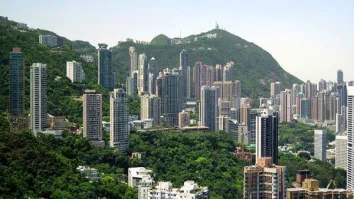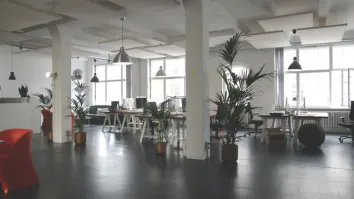
APAC office vacancies to reach a peak of 15% by end-2023
Rising supply will also lift vacancies in Tokyo, Asia’s largest office market.
For 2021, Colliers expects aggregate net office leasing demand to rise 96% from last year’s weak level but sees new supply at 1.6x demand. This should depress rents by 6.1%. Rising vacancy is forecast to peak at about 15% at year-end 2023. High vacancy will be concentrated in China and India while vacancy will be lower in popular occupier locations like Singapore, Sydney, and Melbourne.
Most APAC office markets should favour tenants over the next year, though some are showing signs of recovery. Offices remain popular with investors, who have ample unused capital to deploy. However, with demand and supply out of balance in many cities, office prices are unlikely to rise in the near term.
Here’s more from Colliers:
Aggregate net absorption across 19 key APAC cities fell 52% in 2020. While demand was lower in most markets, cities including Shanghai and Beijing picked up late in the year.
Aggregate demand should rise 96% YOY in 2021 in line with economic recovery in the region, with the strongest pick-up in Beijing, Shanghai and other Chinese cities.
Aggregate APAC supply of 5.22 million sq metres in 2020 was 2.1x demand, with Beijing, Shanghai, Delhi-NCR, Tokyo, and Bengaluru all seeing big increases. We expect supply to grow 50% this year, and to equal 1.6x demand. Supply should stay high in 2022, but turn down in 2023 in most markets except Tokyo, Shenzhen and some Indian cities.
Given recession and the mismatch between demand and supply, weighted average net effective rents fell 5.4% in 2020. We now think aggregate rent will fall 1.6% p.a. on average over 2020-2025. However, rents in Singapore and Auckland should turn upwards in 2021, while those cities plus Bengaluru and Melbourne CBD should see average growth of more than 2% p.a. over five years.
Aggregate APAC vacancy rose 3.3pp to 12.9% in 2020, and should hit a peak of 15.0% at end-2023 before easing. Vacancy rates of over 13% will be concentrated in China and India, while rising supply will also lift vacancy in Tokyo, Asia’s largest office market, notably in 2023. Popular occupier centres such as Singapore, Melbourne CBD and Sydney CBD should hold vacancy in a 5-10% range over most of the next five years.
We expect the majority of regional markets to continue to favour tenants over 2021.
While this outlook facilitates long-term leasing deals, current economic uncertainty will have a major influence on long-term decisions.
Especially in Asia, as occupiers adjust structure and headcount and adopt new work standards, we expect many to reduce their space needs. They may also promote decentralisation with hub-and-spoke models, although this will vary by city.
The technology and life sciences sectors, which thrived in 2020, should expand further.
With demand and supply out of balance in many markets, office asset prices are unlikely to rise in the near term despite evident appetite among investors to deploy unused capital.



















 Advertise
Advertise



